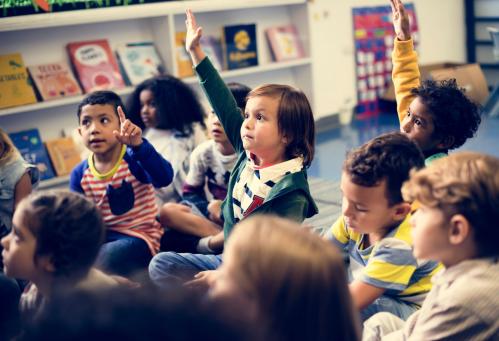Among the five transformative shifts considered essential within the U.N. High-Level Panel’s (HLP) report to the secretary general for the post-2015 development agenda is one which addresses the Bali communique’s emphasis on social inclusion: “Leave no one behind.” The HLP report, launched at the end of May, points to the challenges of ensuring inclusion for marginalized groups in the post-2015 agenda. Few are more marginalized than those with disabilities, however there are compelling reasons to ensure that learning goals are formulated with this significant segment of the population in mind.
By one widely used, albeit speculative estimate, some 93 million children– or 1 in twenty of those aged 14 or younger – live with a moderate or severe disability of some kind. In cases where conflict and the prevalence of landmines overlaps with poverty, disability can be even higher. For instance in Gilgit-Baltistan, Pakistan, Brookings’ Echidna Global Scholars Program alum Khadim Hussain found that disability rates are between 15 and 20 percent. Studies across countries show a strong link between poverty and disability, which is in turn linked to gender discrimination, negative health outcomes and employment challenges. While children with disabilities are often caught in a cycle of poverty and exclusion and are less likely to receive an education, a quality education can contribute to poverty reduction in their lives.
The HLP report’s illustrative goal for education, “Provide Quality Education and Lifelong Learning,” focuses not only on access, but also on learning standards for reading and writing, work-related skills and other measurable learning outcomes. As the education debate shifts from access to access plus learning it is important to turn attention to what learning means for this segment of the population.
The goal of education in the 21st century is not simply the mastery of content knowledge, but the mastery of the learning process: education should prepare all people for a lifetime of learning. All children have the potential to learn, but some learning indicators will need to be different for those with disabilities, both cognitive and physical. However, the individuality of disabilities and their associated learning challenges can seem to make the challenge of equitable learning so daunting that it may seem too complex to take on. Yet now is an opportune moment to do so, when the Learning Metrics Task Force is grappling with the very nature of what constitutes learning across a broad range of domains and how to measure it. Moreover, addressing issues associated with learning for persons with disabilities can illuminate some of the more challenging aspects of the wider learning agenda in ways that may benefit others as well, including in these following three ways:
1. Teaching and learning techniques associated with inclusive education for children with disabilities can benefit a broader range of students. An inclusive education entails providing meaningful learning opportunities to all students, allowing children with and without disabilities to attend the same age-appropriate classes at the local school with additional, individually tailored support as needed. It requires a child-centered curriculum that includes representations of the full spectrum of people found in society (not just persons with disabilities) as well as physical accommodation, such as ramps instead of stairs and doorways wide enough for wheelchair users.
Mobile technologies and universal design for learning, a set of principles for curriculum development that gives all individuals equal opportunities to learn through the creation of instructional goals, methods, materials, and assessments that can be customized and adjusted for individual needs, are likely to become a mainstream aspect of teaching methodology over time. Ultimately, these materials can help to reduce access and learning barriers of all kinds and optimize levels of support to allow all learners to learn in ways most appropriate to their needs.
2. The right to education for disabled children, as for any marginalized group, carries with it a transformational impact on the larger learning community, particularly in the lessons on human rights and civic values that teachers and learners without disabilities receive through an inclusive education.
3. Attention to varying patterns of ability and disability tends to highlight that learning is not exclusively a classroom experience. While this should not be a reason to keep children with disabilities out of classrooms nor to direct them automatically toward vocational alternatives, differentiated learning styles can and do demonstrate that non-traditional settings can at times better serve the learning needs of individuals. At its best, learning occurs throughout the day and in various environments, and this challenges the global education community to place even greater emphasis on the factors contribute to educational quality and learning.
With the issuance of the HLP panel’s report and as groups mobilize for the next phase of discussions and action toward defining the post-2015 development agenda, the education community may find that aiming high to ensure no one is left behind will yield unexpected and positive benefits in learning for all. Hopefully the challenge and benefits of integrating learners with disabilities into the global development agenda will be more fully explored during the U.N. General Assembly High-Level Event on Disabilities on September 23, 2013.


Commentary
Inclusive Education: A Rising Tide Floats all Boats
June 17, 2013